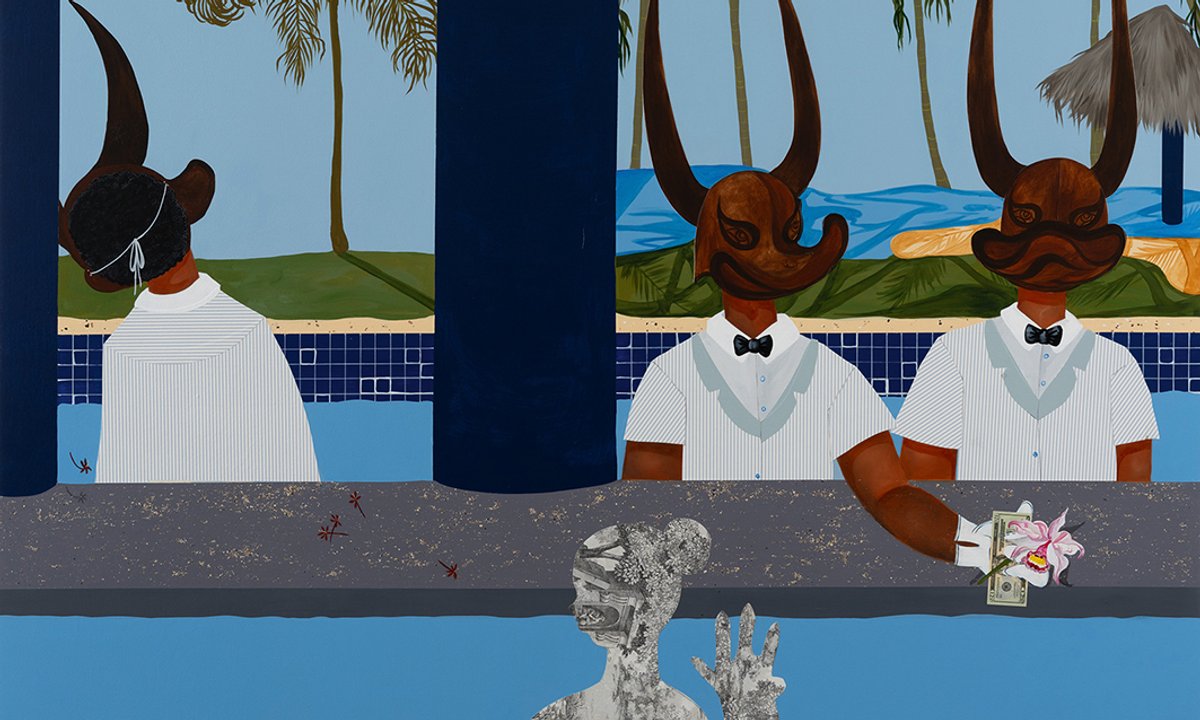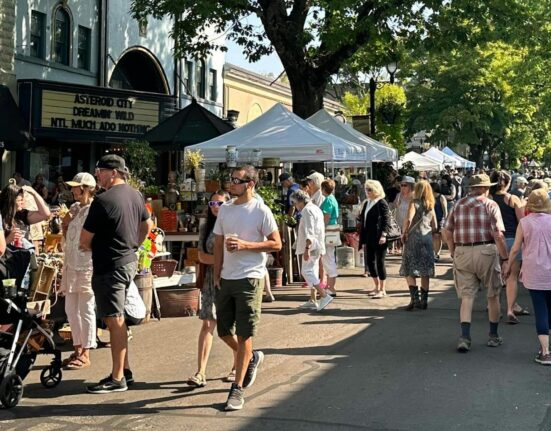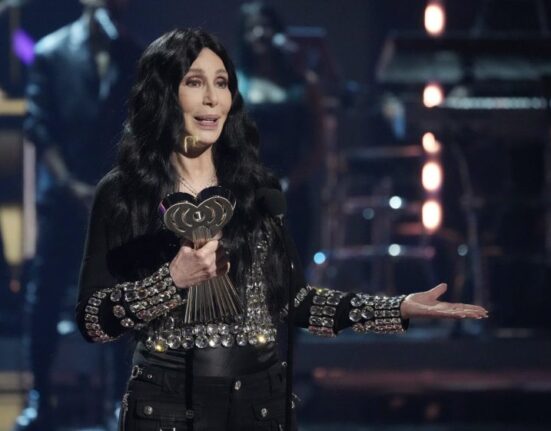In 2019, Bony Ramirez was earning his living as a New Jersey construction worker while quietly making paintings that he doubted anyone would ever see. Five years later, his solo exhibition of new work, Cattleya (until 9 March 2025), organised by Elena Muñoz-Rodriguez, is on view at the Newark Museum of Art, bringing the self-taught artist full circle even as his career continues gaining speed.
The show’s titular orchid is a double reference: first, to the Western tourism industry’s fetishisation of the artist’s native Dominican Republic, and second, to a canvas, dated to around 1880, by Martin Johnson Heade that Ramirez cherished during his frequent visits to the Newark Museum as a transplanted local high schooler. “Orchids are everywhere in the Dominican Republic, so I would always find myself looking at this painting,” he tells The Art Newspaper.
I knew New York had museums, but I was afraid to take the subway to get to the other side
Ramirez moved from the Dominican Republic to the United States in 2009, when he was a young teenager, with his mother and younger brother. Although he was intrigued by fine art—he originally aspired to become a children’s book illustrator—the high costs put university training off-limits. Ramirez’s trepidation about exploring beyond his adopted hometown did the same for the revered art institutions one state away: “I knew New York had museums, but I was afraid to take the subway to get to the other side,” he says.
Upon finishing high school in 2014, Ramirez found himself in the construction business, where the hypermasculine environment required him to hide his queerness and pass as a straight man. His paintings, which he made in his kitchen during weekends and spare hours, provided a release. The 28-year-old artist captures those struggles at the entrance to Cattleya, where How Much I’d Give, Just Friends 1988 (2024), a painting of two young men kissing in a sugarcane field, is paired with an alarming installation of a taxidermied baby calf suspended by chains. The latter work’s title, Sitting on a Bucket of Paint, refers to Ramirez’s makeshift seating during countless hours riding between job sites in the back of a van. “I see this as a self-portrait depicting how I felt while working in a macho setting,” he says. “I couldn’t feel comfortable being myself.”
A self-taught vision
Ramirez’s fantastical wood panel paintings have caught on with collectors and curators in equal measure over the past four years. This stretch has seen him secure four one-person shows with respected commercial dealers, two institutional solos (including Cattleya) and inclusion in numerous international group shows and art fairs.
The artist’s distorted human figures with comical features, mythological oddities and sometimes-vague gendering tend to inhabit uncanny environments, such as Caribbean resorts and ornate bedrooms, that are often loaded with art historical references. And yet, veiled by the joyous elements in Ramirez’s visual universe—the sunny hues, lush attire and self-deprecating humour—are critiques of colonialism, imperialist power structures and history’s continued entanglement with the present. The combination of whimsy and gravity has attracted dealers and collectors from around the globe.
Danny Báez, the director of the Lower East Side gallery Regular Normal, says he had an “immediate” reaction to Ramirez’s paintings after first seeing them on Instagram. He lauds the “distinctive style” of the artist’s compositions— which, “despite looking ‘friendly and caricaturesque’, are more than that”.
I learned to paint with the freedom of experimenting on my own
Ramirez credits his lack of academic art training for his ability to carve out this unique visual lexicon. “I learned to paint with the freedom of experimenting on my own and figuring out a problem by myself,” he says. His figures’ instantly recognisable doe eyes, he adds, emerged from the realisation that he would never be able to study book illustration formally: “Once I knew that I couldn’t go to [art] school, I could embrace similar compositions in my art in mature ways.”
Ramirez also found inspiration in Magical Realism and artists who, in his words, “bend the human anatomy”, such as Francis Bacon and Picasso. But a biographical aspect plays an important role, too; he connects the farcical accents in his work to his mother’s attempts to cover up their family’s immigration to the US as nothing more than a short visit to Disneyland. “The paintings connect with my motherland, which I never went back [to] since leaving,” Ramirez says.
Life-changing lockdown
Although Ramirez lacked any pre-existing art world connections, he found opportunity in the physical restraints imposed by the Covid-19 pandemic in 2020. “Dealers couldn’t visit studios at Columbia University or NYU, so they turned their attention to Instagram for new artists,” he says. The owners of Thierry Goldberg Gallery, on Manhattan’s Lower East Side, were among the first to message him on the platform to offer an online show. The unexpected success of the resulting digital exhibition led to a November 2020 solo at their physical space.
After institutions purchased most of Thierry Goldberg’s solo stand of Ramirez’s work at the 2021 edition of The Armory Show, the artist felt he could finally quit construction work. Subsequent exhibitions at Montreal’s Bradley Ertaskiran gallery, François Ghebaly gallery in Los Angeles and Jeffrey Deitch gallery in New York have proven him right, as have acquisitions by the Museum of Fine Arts Boston, the Pérez Art Museum Miami and the Frye Art Museum in Seattle, among others.
Sustainable rather than speculative
Ramirez’s paintings now typically sell on the primary market for between $15,000 and $60,000 apiece. His auction results have not strayed far from that range, indicating sustainable demand rather than brazen speculating; his record price of $63,000 (with fees), for the 2020 work Las Perlas Traen Lágrimas (pearls bring tears), more than tripled its high estimate at Phillips in New York in May 2022.
This autumn, Ramirez will have his first one-person exhibition in Asia, at the Shanghai-based dealership Bank, which has been introducing his paintings to regional collectors at various fairs for some time. He also continues to collaborate with Ertaskiran, Deitch and Regular Normal but is not exclusively represented by any of them. “I work with galleries that understand me as a person,” Ramirez says. “I am careful with how I stagger my projects with each gallery and make sure I provide them equal amounts of attention.” At this rate, even more will be vying for his time and talent in the years ahead.
- Bony Ramirez: Cattleya, The Newark Museum of Art, until 9 March 2025







